 Automation – What’s in it for us?
Automation – What’s in it for us?
Automation is a historically-significant concept, understood around the globe by most in modern business since the ‘60s. Yet automation has meant many different things for a wide variety of professions and trades, with definitions changing over time. Take for example robotics, which went from a simple arm-flipper of widgets back in the 80’s, to the near fully-autonomous and completely-automated factories we see now.
As 2021 closes out, perhaps it’d be a good idea to think on what we, as project managers (PMs), get from automation. After all, we are professionals that are all about efficiency, cutting costs, and thinking outside the box, right? Sure, the machines on the factory floor are saving time and money stamping out more widgets than ever before, but is that all that we, as PMs, can count on during 2022?
Perhaps, we can garner clues from Chinese manufacturing, since it seems they do an awful lot these days. Manufacturing in China was never really about producing widgets faster, for less money, to feed the capital machine; there has always been a focus on the human side of making things ever since Chinese businesses began to flourish – way back in the 1500s. Take, for example, the Chen Liji Pharmaceutical Factory in Guangzhou. Since 1600 AD, they have been pumping out pharmaceuticals, with not much to automate, but the workers themselves…until now. With today’s technologies, this translates into gait-counting, digit and eye movement-tracking, and a host of other physical “human” automations that most of us don’t even consider. But, let’s consider something else …
Personal Automation
In a recent interview in the Economist, Byron Reese, CEO of Gigaom, said:
“In 2021…. Individuals need to ask themselves, ‘What drudgery do I engage in that I can use technology to destroy? What new opportunities can technology give me that I didn’t have before? Where can I buy back my own time?”
Byron, who runs a technical wisdom think-tank, is talking about “personal automation.” Personal automation, I think, can be summed up by the following diagram:

The three cogs of the personal-automation wheel: human challenges that trigger AI-powered actions, resulting in better workflows and outcomes.
We all face challenges everyday: puzzles to solve, problems to sort out, and tasks that need getting done are endless. The key to personal automation is this: do it once, and then forget about it (until you need to do it again). When next faced with same said challenge, there’s no need to put on your thinking cap to puzzle on through or rework the problem. One tap, or a shout out to Siri or Alexa, and your AI overlord takes over, whomever that may be. That’s the trigger part. Yank the chain, and let the beast take over!
In business terms, we call this RPA, or Robotic Process Automation. RPA is all the rage for 2022, as shown by a recent polling in the Economist, where CEOs were asked to rank high or essential technical priorities for their company’s future:
Side note: some old-schoolers amongst us might be shouting right about now: “Hey, aren’t we just talking about fancy macros?!?”
Well, yes, kind of – but smarter. Personal automation uses AI, and all the other technologies we never had while gritting our teeth and writing macros back in the day, with only the author of the macro language being able to troubleshoot our laughable attempts (think VBA).
Budding Automations for 2022
Moving on (in hopes we never have to write another macro again), software houses are already gearing up in 2022 to meet CEO demand for more RPA, and releasing better apps to help the bottom line (as well as us, the worker bees and drones).
Without a lot of buzz, Microsoft released its interpretation of software automation, Power Automate, way back in 2018. With aid from the acquired RPA firm, Softomotive, in 2020, we see them delivering this RPA platform:
Within Power Automate, you find packaged and tested workflows for… well, not much yet, except for things like “automatically sending emails when a project is opened,” or “automatically notifying resources when a project task is assigned.” There are the more obscure tasks, like “Run sentiment analysis on tweets and push results to a Power BI dataset.” Sure, someone has to do that, right?
I’m sure others within the MPUG community are reviewing the updated Power Automate platform. One such article was Erik van Hurck’s recent Can I use Power Automate with Project for the web? My first impression is that Power Automate is not personal automation at the moment; however, the platform is on the path to becoming that someday. This attempt does show what I see as most important in the evolution of automation: a recognition that the user is not going to code these automations, someone (or some machine) will do that for us, behind the curtain, devising the best ways to accomplish common repetitive tasks and then provide them, as needed.
One key point in order for personal automation to really take off this year, is that we the people don’t even want to think about the challenges or problems – or even the automations themselves – we just want to pick from a library of already noodled solutions. We want to ask the bot to get it done – whatever the issue, just make it so. Think Roomba-level interaction… just turn the key and let it suck up the debris. No need to tell the bot not to disturb the Christmas presents under the tree – it knew right out of the box to pick up the needles without bumping the gifts. Our software needs that level of automation in 2022, as well.
Another company that is making great strides, is a more personal one: Apple just released a new version of its Shortcuts app, which adheres more to the vision of personal automation than the MS offering, and includes a capable voice interface to boot. (Power Automate does not support a natural language interface at the moment). With an Apple device, you (or another more proficient human) can create Apple shortcuts and have them added to your personal library of time-is-money savers, awaiting your command. And better still, app developers are now in the process of creating these shortcuts for you (so you don’t have to). It’s slated to be great for common, repetitive tasks that we hate doing whilst inside these apps. In this case, you just tell Siri what to do…
However, like Power Automate, Shortcuts has some ways to go before being ready for prime time, or even considered essential personal automation. In fact, we users may not be quite ready for it! Consider this quote from Tom Clancy, senior vice president of UiPath, a consulting firm for automating future workplaces:
“In an automated future, the ability to work alongside robots [bots] will be as important as the skills people bring to bear.”
Now ask yourself this: how conversant are you with robots or bots today? Are you comfortable working alongside your devices, having conversations with them, and getting them to do things that you don’t want to? For many of us, that’s the first hurdle to overcome: our past horrible experiences with voice-assistance. Yes, it’s time to try again, now that we all have super computers in-hand and feel secure letting Alexa take care of the shopping.
Practice Exercise
To take Tom Clancy’s advice on developing your personal bot-skills, try this: all that’s required is a working MS Project file, an iPhone, and 15 minutes of learning time.
- Download Project Plan 365 (here or here) and activate the free trial.
- Follow these linked instructions to initiate and use the built-in automations made for .MPP files. (Note, as of writing, there are only two shortcuts to choose from: Open Project and Report Status; however, the app’s developer says more are on the way.) Then, use your test file and give it a go – you’ll get a quick peek at what’s coming!
- Then, leave your thoughts in the comments below, and let me know what you think about one of 2022’s first hacks at personal automation for MS Project.
Note to Self…
In conclusion, let me share a recent note-to-self:
Dear Jigs,
In 2022, please hone my interactions with all my robotic devices so they do as much of my drudge work as possible, freeing me up to automate any new work challenges, thus making my workflow part of a perpetual-efficiency machine, instead of an endless aggravation generator.
Signed with love,
Me




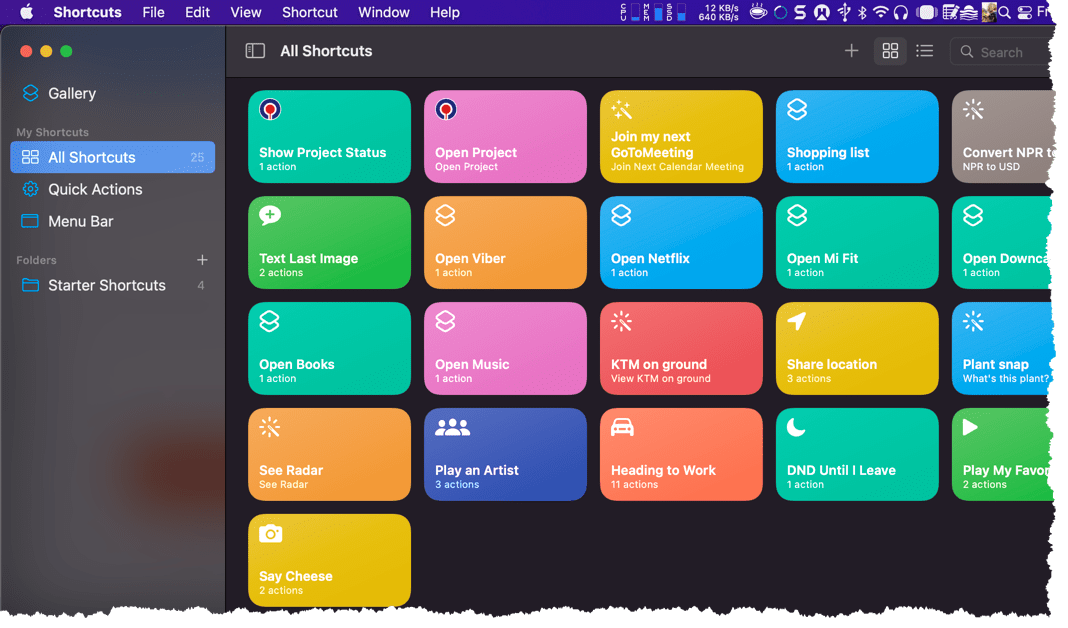
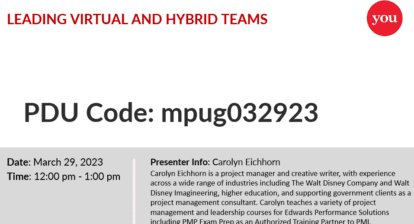
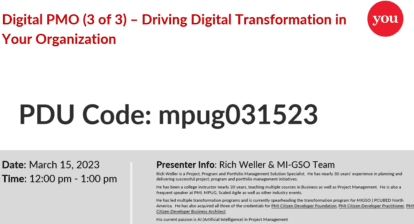
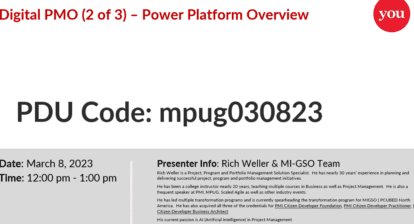
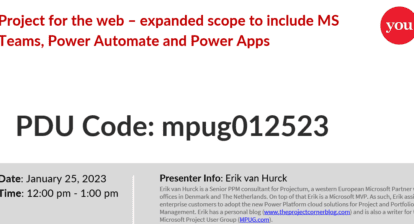


Jigs Gaton
I’ll be there Erik! Thx for reading this, and thx for the nice comment 🙂
Shana Beatty
I agree with Erik. This is excellent content. I have been searching for ways to integrate PowerAutomate with Project Online and DevOps. Integration and automation are my two target skill areas for 2022.